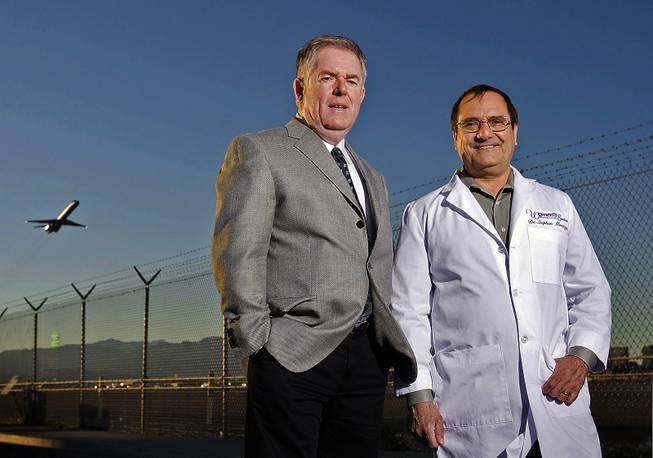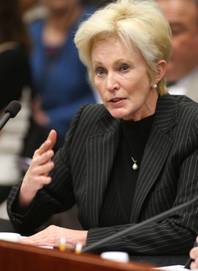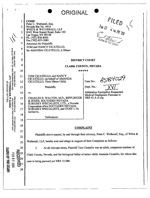
Steve Wilkinson, left, a retired pilot, and Dr. Steve Montoya formed a company that trains medical staffs to work together.
Saturday, Jan. 29, 2011 | 2 a.m.
Do No Harm: Hospital Care in Las Vegas, Part 5
- Sun investigation reveals flaws in hospital care; solutions offered
- How to put patients first
- Local hospitals’ willingness to change culture would be a step toward better care, transparency
- ‘You can’t kill my mother and get away with it’
- We must adopt a culture of sincere care
- How to file a complaint
Share your stories
United Airlines Flight 173 was approaching Portland, Ore., when the pilot realized something was wrong with the landing gear.
He ordered the crew to prepare the 181 passengers for an emergency landing, and circled the plane for more than 20 minutes while he discussed approach strategies with air traffic controllers.
The captain circled so long that the airplane ran out of fuel and crashed into the woods about six miles from the airport. Ten people died and 23 were seriously injured on Dec. 28, 1978.
The National Transportation Safety Board concluded that the first officer, who was responsible for monitoring the captain, and the flight engineer, who was responsible for managing the aircraft’s systems, knew the plane was running out of fuel. But neither directly expressed concerns to the captain until it was too late.
The accident was a seminal moment in the airline safety movement, in part because the tragedy exposed a core flaw in the culture of aviation: The captain’s management style may have exerted “subtle pressure on his crew to conform to his way of thinking,” the NTSB wrote in its report. “It may hinder interaction and adequate monitoring and force another crew member to yield his right to express an opinion.”
The culture of aviation was endangering passengers.
The same could be said for the culture of health care. Among the findings of a three-year Las Vegas Sun investigation were at least 3,689 cases of patients having suffered preventable infections and injuries in Las Vegas hospitals in 2008 and 2009. In 354 of the cases, the patient died in the facility where the harm occurred. The Sun found that hospital administrators often put profits above patient safety, and instances where doctors were not held accountable for their performance. A culture of safety does not permeate hospitals in Las Vegas, or in the United States, where preventable patient deaths because of similar harm are estimated to be in the hundreds of thousands annually.
When Steve Wilkinson, a retired commercial pilot, and Dr. Steve Montoya, a Las Vegas obstetrician/gynecologist, were neighbors, they realized the similarities between their industries:
• They’re both high-risk and high-stress enterprises where the lives of many are in the hands of a highly trained few.
• They both depend on teamwork and safety to protect passengers or patients.
• They are both complex, meaning success requires proper checklists, protocols and procedures to ensure no details are missed.
• In aviation, the belief was formerly that “the captain is always right” and above being challenged, and error reporting was nonexistent. A similar aura surrounds many physicians, and most hospitals woefully underreport cases of patient harm.
In 2006, Wilkinson and Montoya formed Medical Management Resources, part of a growing movement to apply aviation safety lessons to the health care setting.
Wilkinson, who retired in 2007 after 28 years with Northwest Airlines, remembers a conversation he had with Montoya before they launched their company. The pilot asked if surgical teams do formal briefings before every operation.
Not really, Montoya replied, because we all know what we’re doing.
Wilkinson said he has done countless landings at the Minneapolis airport, but before every flight he talks about the route with the co-pilot. And before each departure he meets with the entire crew and says: “If you see anything unusual, not only do I want you to say something, I expect you to say something.”
Montoya now employs the same procedure in the operating room and said it’s proven results, with technicians pointing out troublesome issues that had gone unnoticed by doctors.
It sunk in to both that the cultural challenges faced by aviation 25 years ago are nearly identical to those facing health care today.
Wilkinson remembers the aviation safety reformation well. The airlines mandated training reforms in the early 1980s that required pilots to attend group sessions with officers, engineers and attendants to discuss communication skills, teamwork and workload management. The pilots hated it, but Wilkinson said he was a co-pilot at the time.
“I was happy that I could finally speak,” he said.
Wilkinson said the training changed the culture of aviation. Captains were required to encourage feedback from the crew, and the crew members were required to assert themselves. It became a team effort. In addition, pilots were tested every year in simulators and observed to ensure their performance was up to par. The same is not true of medical doctors, said Montoya, a former president of the Nevada State Board of Medical Examiners. They may be required to do some continuing medical education, but the courses are of their choosing, and it’s easy to manipulate the system, he said.
Lives can be saved if health care goes through a similar transformation, Wilkinson and Montoya said. The two have trained employees in the Neonatal Intensive Care Unit at University Medical Center, as well as at several clinics in Las Vegas.

Kathy Silver
UMC CEO Kathy Silver said the training helped eliminate much of the conflict and misunderstanding taking place in that neonatal unit, where about 65 doctors, nurses, respiratory therapists and pharmacists care for dozens of extremely sick babies at a time. The nurses and doctors had been unhappy with each other, she said, so the hospital made the meetings mandatory. The staff had candid conversations about the problems — some real, some perceived — and came away with a new understanding on how to work together, Silver said.
“The nurses got to see the physicians as team members and colleagues and vice versa,” Silver said. “It broke down some of those barriers of ‘I’m the boss and you’re the nurse.’ It was very helpful.”
Dr. Brian Iriye, who runs the largest high-risk pregnancy practice in Las Vegas, hired the company to train his staff in 2008.
“It taught people within the practice to be empowered to speak up, and that safety was everybody’s responsibility, not just the physicians’,” said Iriye, who is on the Society of Maternal-Fetal Medicine’s board.
The training led to a checklist for tests of the amniotic fluid, known as amniocentesis, to make sure the lab tests and precautions were taken. The checklist is signed by the medical assistant and the doctor, to make sure it’s double-checked, he said.
The fundamental way the staff communicates has changed, too, Iriye said. The clinic has 53 employees and sees about 800 patients a week, so there are plenty of details that can become lost in the shuffle. Now, if Iriye asks someone to do something, they are expected to reply with a “yes” or a “no” so he knows they heard him.
“It sounds simple and stupid, but it’s important,” he said.



Join the Discussion:
Check this out for a full explanation of our conversion to the LiveFyre commenting system and instructions on how to sign up for an account.
Full comments policy